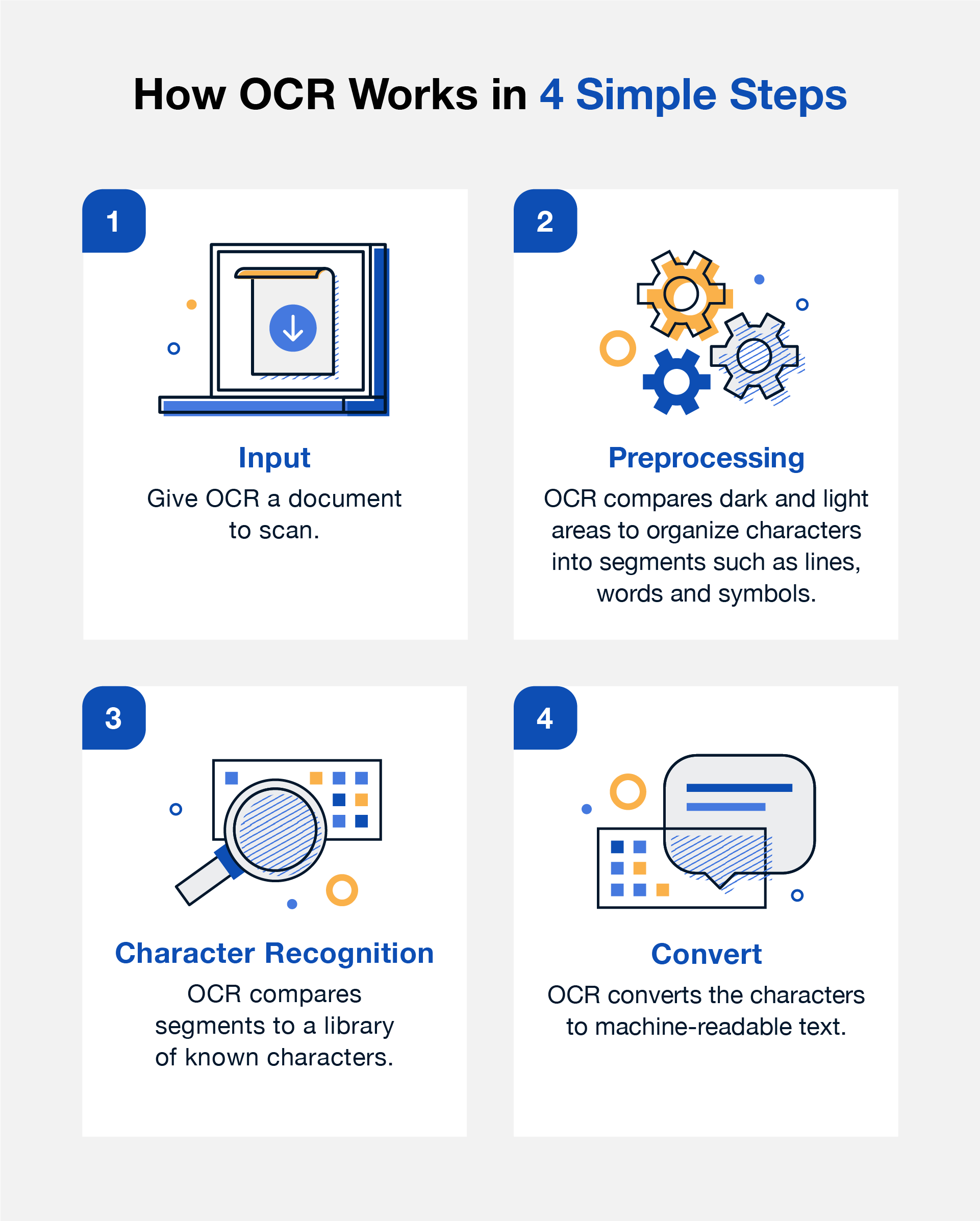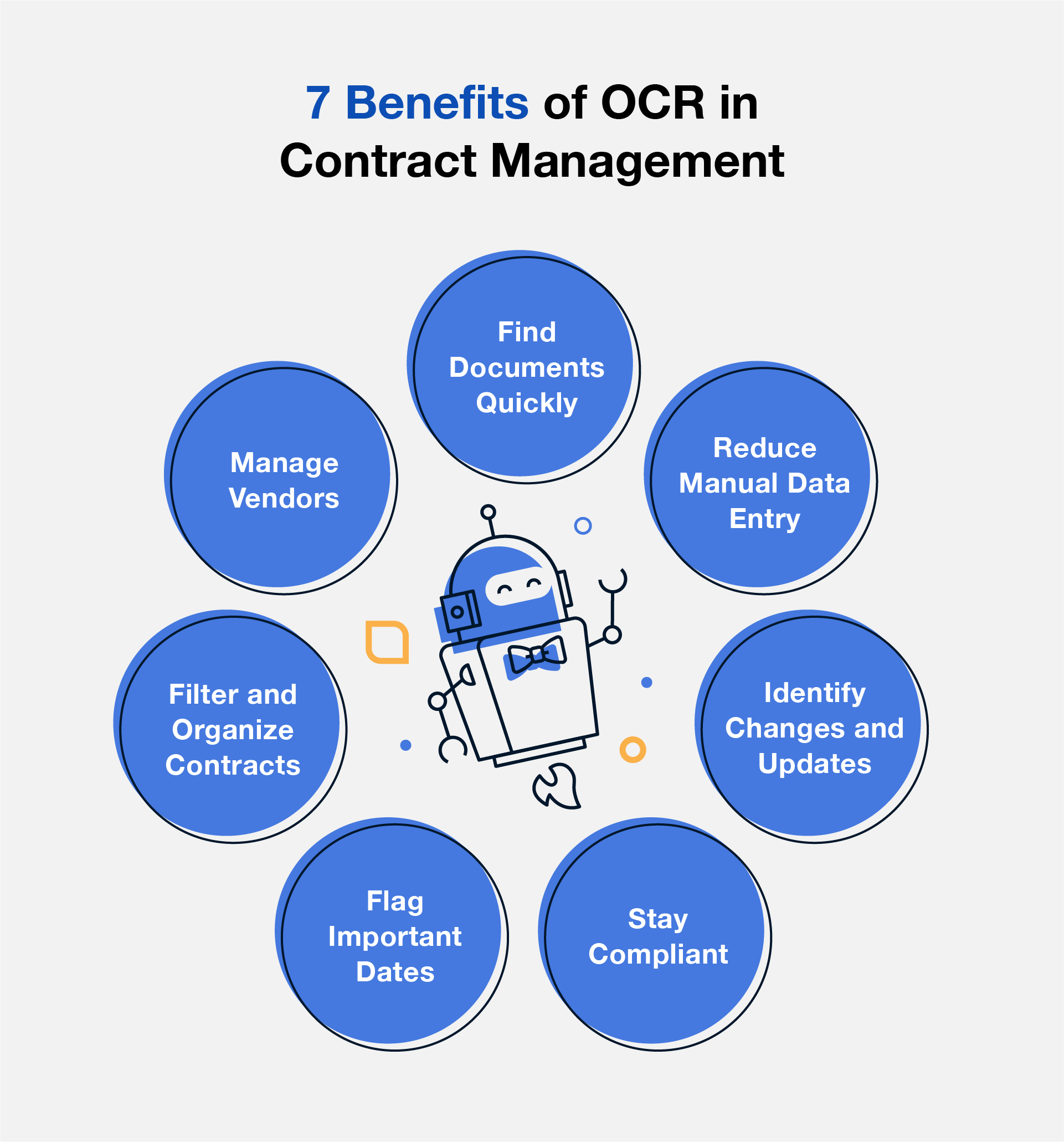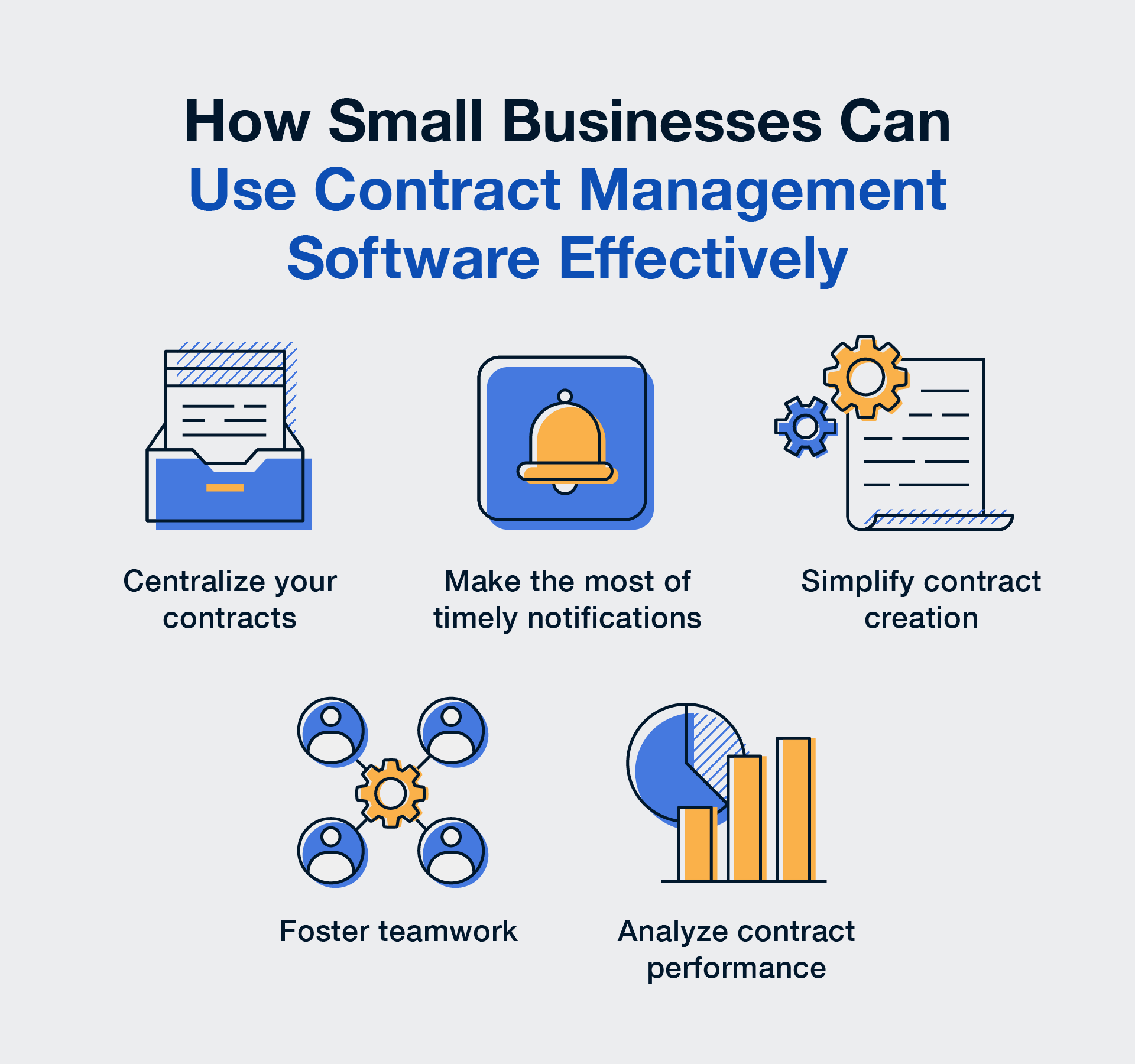Manually digging through pages and pages of contracts is exhausting. Now imagine doing that across dozens—or even hundreds of agreements. It’s easy to miss key details, and nearly impossible to keep up. The answer? Optical Character Recognition or OCR. OCR is a technology that converts different types of documents, such as scanned paper documents, PDFs, or images captured by a digital camera, into editable and searchable data.
It's safe to say that the sheer number of words in your company’s contract repository is staggering.
So, how can a busy contract manager like yourself efficiently find the documents you need, precisely when you need them?
The answer is optical character recognition, or OCR. It's a technology that enables the conversion of various document formats into machine-readable text data.
In this post, we'll explain exactly what OCR is, how it works, and how your company can use it to streamline your contract management process.
TL;DR
- Optical character recognition (OCR) is a technology that scans text characters in digital images or scanned documents and makes them searchable. It’s like adding a search bar to a piece of paper.
- OCR can help in contract management by automatically extracting text from scanned contracts, making them searchable and easier to manage.
- By using OCR, organizations can save time and resources in the contract management process.
What Is OCR?
In simple terms, OCR is a type of technology that can recognize text within an image. It essentially works like a scanner that can pull out text and convert it into digital form, making written documents machine-readable.
OCR software can recognize letters, numbers, or symbols, even if they're handwritten and saved in a PDF.
At its core, OCR allows computers and other machines to understand what’s written or printed on a page. It's a little like giving machines superhuman vision!
Not only can it help you find what you need in a pinch, but it can also help cut down on manual data entry by allowing you to quickly move information from paper documents into digital ones.
How Does OCR in Contract Management Work?
In the realm of contract management, OCR plays a pivotal role. By transforming scanned contracts and images into searchable text, contract OCR allows organizations to manage and retrieve contract information efficiently.
The OCR process can be broken down into the following steps:
-
Input: The first step is to provide OCR with a document that needs to be scanned or converted into machine-readable form. This can be either paper documents or digital files, like PDFs and images.
-
Preprocessing: Once the document has been scanned, OCR will begin to recognize each individual character within the text. It does this by interpreting the dark and light portions of scanned text.
-
Character recognition: OCR then compares these segments to a library of known characters. It determines which character the segment belongs to and stores it for future reference.
-
Convert to machine-readable text: After OCR has identified each character, it then converts them into machine-readable text. This text can be used to store and manage key documents easily.
When it's all said and done, users can access documents in mere milliseconds.

OCR in Contract Management
Let's face it: Manual contract data entry is pretty dull. And it's also prone to errors.
Plus, who wants to sort through a mountain of paperwork to find a rogue indemnity clause that was supposed to be attached to an MSA?
Thankfully, OCR can help with both. It can quickly scan documents to identify each character, so manual data entry becomes a thing of the past. It can also create a searchable index that allows for Google-like search across and within documents.
Think of OCR as your own personal assistant, but instead of bringing you coffee, it brings you contract clauses.
It’s one of the most important contract management tools you can have in your arsenal.
OCR and AI: A Powerful Combination
While OCR focuses on text recognition, integrating it with Artificial Intelligence (AI) enhances its capabilities. This synergy, often referred to as OCR and AI, enables more accurate data extraction and analysis, especially in complex documents like contracts. Whether Jeff in accounting needs a reminder of how much he agreed to pay for that printer or the legal team needs a quick reference of what was stated in a five-year-old contract, OCR makes it easy to extract key information from contracts.
Here are a few things OCR can pull from just about any kind of contract:
- Names
- Dates
- Signature blocks
- Specific clauses
- Dollar amounts
- Addresses
- Contact information
This is a huge time-saver for any organization, especially those with long and complex contracts that would take hours to sort through manually.
And it’s not just about extracting data, either. OCR can also be used to detect errors in contracts or check for missing information before they're signed. This gives companies peace of mind that their agreements are sound and legally binding.
RELATED: What's the Difference Between OCR and AI?
Is OCR Considered AI?
While OCR is a technology that predates modern AI, when combined with AI algorithms, it becomes more powerful. This integration allows for intelligent data extraction and interpretation, leading some to associate OCR with AI capabilities.
Benefits of Using OCR in Contract Management
If you've ever had to sift through a physical file cabinet with a questionable approach to organization, you can probably already see some of the benefits of OCR.
But just to make it easier to convince your boss how much of a game-changer it is for contract management, let's do a deep dive into how it can help your business.

Find Documents Quickly
Have you ever named a file something silly for the sake of time? Maybe something like "main_contract_amz(1).docx"?
And then just forgot about it entirely? That is, until the legal team asked you about a force majeure clause that was outlined in the doc?
It’s one of the most common challenges contract managers face.
But if you've got a contract management system that uses OCR, all you need to do is type "force majeure" and you can find the contract, the clause, and key obligations with the click of a button. It makes all contracts fully searchable without having to remember a file name or folder.
Take a look for yourself:
Reduce Manual Data Entry to Improve Efficiency
There are a lot of pitfalls that come with manual data entry. It's error-prone, time-consuming, and, well, boring. On top of that, a DocuSign study shows that inefficient contract management can cost businesses as much as 9.2% of their revenue every year.
But OCR can help.
Instead of having a team manually enter information from contracts into a spreadsheet or database, your company can leverage OCR technology to quickly scan and extract key data and organize it automatically.
It's not quite artificial intelligence, but it does save time and money when dealing with large volumes of contracts that need to be processed efficiently — something manual data entry just cannot do.
And as an added benefit, it'll allow your employees to take on tasks that might be a little more...exciting.
Easily Identify Changes and Updates
Juggling multiple versions of a contract between multiple stakeholders is a recipe for disaster. It can lead to lost signatures, legal risks, and even disagreements between parties.
That's where OCR comes in. With OCR, analyzing and comparing multiple contracts is a breeze. OCR can identify text in a document quickly, allowing users to compare different versions of the same contract or redlined versions side by side without having to spend time manually retyping them.
Users can also easily identify changes that have been made to documents over time, so you can make sure they are up to date with any new clauses that may have been added since the last version.
Stay Compliant With Regulatory Guidelines
Privacy is a big deal, and regulators take it seriously. Breaking HIPAA or GDPR laws can carry some steep penalties. And constant changes in the legal landscape can make compliance a nightmare.
While OCR can't solve all your compliance concerns, it can make life a little bit easier for contract managers.
Using OCR, contract managers and compliance officers can quickly pull any relevant text from a contract and ensure that they are compliant with all applicable guidelines.
It's also useful for performing regular audits. By scanning documents into an OCR system, users can easily compare different versions of contracts and make sure they comply with any regulatory requirements that may apply. This eliminates the need to manually review each document, saving time and effort while still ensuring accuracy.
This can be a lifesaver, especially if you’re handling healthcare contracts.
Flag Important Dates
When you've got a mountain of contracts to manage, it can be difficult to keep track of all the important dates.
OCR makes this job a bit easier by allowing users to automatically flag important dates that appear in the documents. This ensures that you don't miss any key deadlines and helps keep your contract agreements up to date.
Bonus points if your contract management software can automatically send alerts and reminders as key dates approach!
Filter and Organize Contracts
OCR can also be used to organize and filter contracts using keywords. This makes it easier to quickly locate contracts and their associated information, such as parties involved, dates, and other important details.
This is especially helpful when you have multiple contracts to manage and you need to sort through them quickly. With OCR in contract management software, this job becomes much faster and hassle-free.
Manage Vendors
When it comes to vendor management, OCR is a contract manager’s best friend.
The technology enables you to capture and store data about vendors quickly and accurately, allowing for better transparency between all parties involved.
It makes managing obligation dates, invoices & payments a breeze.
This ensures that all paperwork is up to date with accurate information at all times, terms of the contracts are being met, and all signatures are accounted for.
OCR also streamlines the processes related to vendor onboarding, such as verifying their identification documents or other required credentials. This means your team can focus on more value-added, strategic activities.
RELATED: What is OCR and Why is it Important in Contract Management?
Experience The Benefits Of OCR in Contract Management Software
Understanding what OCR is and its application in contract management is essential for modern businesses. OCR is a lifesaver in nearly every stage of the contract management process. It can save a lot of time and money in the long run, making it an invaluable asset for any business.
It’s a game-changer for managing contracts. It makes everything faster, easier, and way more accurate—so you can stay on top of your contracts without the headaches. No more painstakingly reviewing paperwork and wondering if every “i” has been dotted and every “t” crossed. Just imagine what you could do with all that extra time!
But don't take our word for it. Sign up for a free demo and see how contract management software using OCR technology can transform your business today.



















